|
The brain represents only about 2 percent of most people’s body weight, yet it accounts for about 20 percent of the body’s total energy usage—about 10 times more than would be expected. When the brain is fully working, it uses more energy per unit of tissue weight than a fully exercising quadricep. In fact, the human brain cannot simultaneously activate more than 2 percent of its neurons at any one time. More than this, and the glucose supply becomes so quickly exhausted that you will faint.
Consider the following statistics. The three requirements for human life are food, drink, and fresh air. But their effects on survival have very different timelines. You can live for 30 days or so without food, and you can go for a week or so without drinking water. Your brain, however, is so active that it cannot go without oxygen for more than 5 minutes without risking serious and permanent damage. Toxic electrons over-accumulate because the blood can’t deliver enough oxygen sponges. Exercise does not provide the oxygen and the food. It provides your body greater access to the oxygen and the food. How this works is easy to understand. Brain Rules: 12 Principles for Surviving and Thriving at Work, Home, and School The more you exercise, the more tissues you can feed and the more toxic waste you can remove. This happens all over the body. That’s why exercise improves the performance of most human functions. The same happens in the human brain. Imaging studies have shown that exercise literally increases blood volume in a region of the brain called the dentate gyrus. That’s a big deal. The dentate gyrus is a vital constituent of the hippocampus, a region deeply involved in memory formation. At the molecular level, early studies indicate that exercise also stimulates one of the brain’s most powerful growth factors, BDNF. That stands for Brain Derived Neurotrophic Factor, and it aids in the development of healthy tissue. BDNF exerts a fertilizer-like growth effect on certain neurons in the brain. The protein keeps existing neurons young and healthy, rendering them much more willing to connect with one another. It also encourages neurogenesis, the formation of new cells in the brain. The cells most sensitive to this are in the hippocampus, inside the very regions deeply involved in human cognition. Exercise increases the level of usable BDNF inside those cells. The more you exercise, the more fertilizer you create—at least, if you are a laboratory animal. Recall that our evolutionary ancestors were used to walking up to 12 miles per day. This means that our brains were supported for most of our evolutionary history by Olympic-caliber bodies. Exercise makes your muscles and bones stronger, for example, and improves your strength and balance. It helps regulate your appetite, changes your blood lipid profile, reduces your risk for more than a dozen types of cancer, improves the immune system, and buffers against the toxic effects of stress (see Chapter 8). By enriching your cardiovascular system, exercise decreases your risk for heart disease, stroke, and diabetes. The idea of integrating exercise into the workday may sound foreign, but it’s not difficult. I put a treadmill in my own office, and I now take regular breaks filled not with coffee but with exercise. I even constructed a small structure upon which my laptop fits so I can write email while I exercise. At first, it was difficult to adapt to such a strange hybrid activity. It took a whopping 15 minutes to become fully functional typing on my laptop while walking 1.8 miles per hour. Brain Rules: 12 Principles for Surviving and Thriving at Work, Home, and School by John Medina Fights are like car wrecks,” he said. “It could be anything, anytime, and it will be unexpected. "4/13/2013
“Fights are like car wrecks,” he said. “It could be anything, anytime, and it will be unexpected. Car wrecks are what they are—you don’t leave in the morning and think, Okay, I’m gonna get hit by a station wagon at the stop sign on that little street. It’ll be a fucking car wreck and you just don’t know how or when it’s gonna happen.” This is a huge concern of mine, because all the confrontations I’ve been in have been planned, fights in cages or rings, with months of preparation. The car wreck fight scares me, because you have to react quickly and surely; hesitation can be doom. I’m sure I can be plenty effective if given enough time to prepare, but wake me up from a nap and how would I act? “When you get in your car, you put your seat belt on, not because you expect the wreck, but because the possibility exists,”
“Think about it like this,” he said. “Every time you perform a repetition of the action, every time you practice it, you put that repetition in your mental storage box. Now, in a crisis, you have to perform that same skill, and you blindly reach into your mental box and pull out a repetition at random. Hopefully, it’s a good repetition, done with the proper form, or you will be in trouble.” The Disaster Diaries: How I Learned to Stop Worrying and Love the Apocalypse by Sam Sheridan An excerpt from a 2004 interview with Murakami in The Paris Review brings home the connection between physical strength and creating extraordinary work:
When I’m in writing mode for a novel, I get up at 4:00 A.M. and work for five to six hours. In the afternoon, I run for ten kilometers or swim for fifteen hundred meters (or do both), then I read a bit, and listen to some music. I go to bed at 9:00 P.M. I keep to this routine every day without variation. The repetition itself becomes the important thing; it’s a form of mesmerism. I mesmerize myself to reach a deeper state of mind. But to hold to such repetition for so long—six months to a year—requires a good amount of mental and physical strength. In that sense, writing a long novel is like survival training. Physical strength is as necessary as artistic sensitivity Haruki Murakami The one thing that is utterly and completely under your control is your own physical condition—you can get in shape.
And there is another reason to stay fit: The physical is inextricably linked to the mental. The greater the fitness level, the higher the cognitive resilience to stress. In-shape athletes handle stress hormones better than out-of-shape people. The adrenaline dumps don’t affect their minds as badly. If you’re in shape, you get to hang on to those fine motor skills a little longer. The Disaster Diaries: How I Learned to Stop Worrying and Love the Apocalypse by Sam Sheridan Want to know more? Check out Indestructible Muscle here 10-Minute Toughness by Jason Selk ( http://www.enhancedperformanceinc.com/)
10-Minute Toughness: The Mental Training Program for Winning Before the Game Begins This is one of those books that you really debate whether to buy, but after reading it, and making a lot of notes and highlights, I will simply say buy it. I find myself using the breathing technique all the time, and I found the exercises to be worth thinking about and doing.There are some parts that are a little simple, and there is some repetition but over all this is a good solid book. I have noticed that one trait that truly successful people have in common is that they have developed and maintained a solution-focused approach in their careers and in life. You need to always ask yourself, every time you encounter each opportunity - What is one thing I can do that could make this better? Always have a solution on the board: A results-driven model that identifies the biological and environmental obstacles to achieving greatness. What is one thing I can do that could make this better?: A concrete method of overcoming all obstacles and making success a permanent state. An effective way to control heart rate is to use a "centering breath" before and during competition. The centering breath, often referred to as a "diaphragm breath," is a long, deep inhalation of air into the diaphragm. Inhaling air into the diaphragm is a biological tool that helps control the heart rate. Taking a deep, centering breath allows individuals to keep their heart rate under control and perform at a more effective pace. I have tried to simplify diaphragm breathing by qualifying a good centering breath as one that lasts fifteen seconds. The formula is 6-2-7: breathe in for six seconds, hold for two, and breathe out for seven seconds. The heart rate is a primary control of a person’s arousal state. It is important to control heart rate because using the mind effectively becomes increasingly more difficult as the heart rate rises. Once the rate gets to 120 beats per minute, the mind will not be nearly as sharp (unless proper conditioning and mental training has occurred), and at about 150 beats per minute, the mind will essentially shut down and go into survival mode. Do not focus on results but stay in the moment and execute one skill at a time, one routine at a time. If we do not choose our thoughts carefully, they can (and many times do) have a negative impact on performance. "One skill at a time, one routine at a time." When athletes keep their minds focused on positive performance cues, they are more likely to experience success. 10-Minute Toughness: The Mental Training Program for Winning Before the Game Begins A performance statement is a type of self-talk designed to help athletes zoom in on one specific thought to enhance performance consistency. It is a simple, yet concrete, thought that specifically identifies the process of success, or what it takes to perform at your best. The key is to identify the single most fundamental idea of what it takes for you to be successful to allow you to simplify the game. For the majority of athletes, mental clutter usually occurs because individuals do not know what they should be thinking. Mental toughness is abnormal, just as physical strength is abnormal. We are born without much muscle development. As we grow, if we don’t emphasize physical fitness, we will not develop appreciable strength. In that sense, it is somewhat abnormal to be physically strong. The same is true for mental toughness: most people don’t commit to replacing their negative thoughts with positive thinking. In my opinion, the essence of mental toughness is the ability to replace negative thinking with thoughts that are centered on performance cues or that contribute to improved self-confidence. The most helpful method to stop self-doubt and negative thinking is thought replacement. Effective thought replacement occurs when you decide what you want to have happen and then think more often about what it will take to make it happen. Replace all thoughts of self-doubt or negativity with thoughts of what it is that you want, and you will be much more likely to have those things occur. If you determine what you want to accomplish in any given situation and then lock your mind on what it takes to achieve that goal, you will have a much better chance of reaping the rewards. As often as possible, choose to think about the path to success rather than the obstacles in your way. You have to decide what you want and then put your energy into acquiring it. Cognitive psychology has taught us that the mind can fully focus on only one item at a time. In short, if you are thinking about what is going wrong in your life, you cannot be thinking about what it takes to make it right. The most effective way to avoid self-doubt and mental clutter is to replace the negative thoughts with specific positive thoughts. Listen first; then decide; be swift and confident. 10-Minute Toughness: The Mental Training Program for Winning Before the Game Begins Note: see yourself as a advisor to yourself. what would you say to someone else in your position. in my case I would say be what you want to be not what someone wants you to be Self-image is internally constructed: we can decide how we view ourselves. The experience I had with Jenny taught me very early the powerful impact of maintaining a positive self-image. Each of us chooses how we see ourselves. Creating and using a positive identity statement will help you choose a powerful self-image. Largely what determines people’s self-image is the things they continually say to themselves, Simply put, the individual who steps up to the starting line with a true belief in his or her ability to do well has a much greater likelihood of success than those who don’t have that mind-set. In a revised version of Dr. Maxwell Maltz’s work Psycho-Cybernetics, testimonies from top athletes such as Jack Nicklaus and Payne Stewart and coaches such as Pat Riley and Phil Jackson support Maltz’s position regarding the powerful impact that self-image has on athletic performance. Self-image is not mental trickery; it is a scientifically proven agent of control. The key is to create the self-image desired—decide who you want to be and how you want to live—and then continuously tell yourself that you have what it takes to be that person. The self-image will guide and direct actions and behaviors until the self-image becomes the reality. In the words of Maxwell Maltz, "You will act like the sort of person you conceive yourself to be. More important, you literally cannot act otherwise, in spite of all your conscious efforts or willpower. This is why trying to achieve something difficult with teeth gritted is a losing battle. Willpower is not the answer. Self-image management is. Stop thinking about what you can’t do and start thinking about you want to do. Remember: the centering breath is a deep breath used to physiologically control heart rate and arousal. Taking a centering breath at the end of the mental workout is necessary for athletes because completing the personal highlight reel may cause the heart rate and arousal state to elevate. You always want to feel calm, confident, and relaxed up to the point of competition. it is possible to overdue mental work. I tell athletes that doing the mental workout one time a day is great. Some clients prefer to do it a couple of times a day, and that is OK, but there is no need to do it more than twice a day. Let’s take this opportunity to review the five tools in the mental workout before we move forward. First is the centering breath, which will take you fifteen seconds. Then you recite to yourself your performance statement, a self-statement designed to improve your focus on what it takes (process of success) to be successful; this should take about five seconds. In the third step, you run through your personal highlight reel, comprising three sixty-second clips of visualizations, for three minutes total. When your personal highlight reel is over, you deliver to yourself your identity statement, a self-statement to help you focus on developing the self-image you desire; as with the performance statement, this will take five seconds. You finish the mental workout with another fifteen-second centering breath. The three concepts that turn ordinary goal setting into effective goal setting are these: Process goals produce results No excuses; go public Keep goals alive, and live the dream The three levels, or types, of goals that I discuss with clients are ultimate goals, product goals, and process goals Ultimate goals are the culmination of what you want to accomplish and how you want to accomplish it. When identifying your ultimate goals, imagine being able to look into the future and witness your retirement dinner. Product goals are result-oriented goals. They are clearly measurable and usually are most effective if they emphasize accomplishments in the next twelve months. Process goals are the "what it takes" to achieve the product goals you set. Process goals also must be specific enough to be measurable. It is important to write your goals down and let others know of your intentions. The act of writing down as well as talking about your goals makes them more a part of your reality. The more you can see and recite your goals, the more steadily they move from your subconscious into your awareness. "Never make excuses. Your friends won’t need them, and your foes won’t believe them. Excuses promote underachieving. For goals to work, they must become a part of daily training. The 10-MT goal-setting plan is a three-step process: 1. Further on in this book, you will take a few minutes to write down your ultimate goals. Remember that ultimate goals are the summary accomplishments you want from your sport and how you want to be remembered as going about achieving those accomplishments. Additionally, you will set two product goals for the upcoming season, including three process goals needed to help achieve each of the product goals. 2. After practices and games, you will take about three to four minutes to fill out a Success Log. The Success Logs ask athletes to answer the following questions: What three things did I do well today? Based on today’s performance, what do I want to improve? What is one thing I can do differently that could lead to the desired improvement? 3. Just before doing your mental workout, you will take one minute to review your Success Log entries from the previous day. Looking over your log just before going through your mental work will steer you to emphasize your improvement goals in your mental workout. Hence, the power of goals will be more alive in each and every practice and competition. There are four steps you will need to take to personally tailor your 10-MT goal-setting program: Identify what your ultimate accomplishment would be. Determine the specific accomplishments (product goals) necessary to achieve your ultimate goal. For each accomplishment, identify what it will take on your part (process goals) to achieve the goal. Determine the personal sacrifices and character strengths required to live out your dream. Defining your personal vision is essential to selecting the right goals. If you do not invest a little time to figure out with some precision who you want to be and how you want to live, you may well select goals to which you will not stay committed. Consider using a methodology for choosing goals that Tal Ben-Shahar endorses. Dr. Ben-Shahar’s course on positive psychology has become one of Harvard’s most popular courses. In his book Happier, he outlines a process of selecting goals that produce happiness: First, make a list of all the activities that you know you are good at. Second, of all the activities you are good at, make note of those activities that you enjoy doing. Then go even further by selecting the activities from that list that you really like to do. Once you have that list, go one step further and note the activities that you really, really like to do. Those are the activities on which you should focus. The 10-MT personal rewards program allows individuals to identify the specific type of motivation needed for optimal personal success. Distinguishing between material rewards and experiential rewards helps determine what combination balance works best. Additionally, it is helpful to be able to call on a supporting mentor, coach, or parent as you strive toward your ultimate goal. Set goals that will lead to greatness, and you will maximize your athletic potential. It is also important to set new goals once a goal is achieved. College basketball coach Rick Pitino noted that the difference between dreams and goals is that dreams are where we want to end up and goals are how we get there. This doesn’t mean you train during every waking hour, day in and day out. For one thing, it is necessary to incorporate rest into training cycles. What it does mean is that if you know of something that would help your training and competitive performance, you owe it to yourself to at least test it The two keys to being fully prepared and having unwavering confidence in yourself are, first, to put the time and energy into doing everything you know you need to do to be prepared and, second, to be aware that you are fully prepared. I am a firm believer in the precept that winning versus losing is determined more on training days than on game days. I think the person or team who prepares more fully in training wins more often. From a training standpoint, I use the MP100 + 20 approach for work ethic and training. "MP100" means following 100 percent of your mental-training program and 100 percent of your physical-training regimen, and the "+ 20" symbolizes an additional 20 percent of energy put forth to make sure you are more prepared than the competition. Lanny Bassham, an Olympic gold medal shooter, says that 5 percent of the people do 95 percent of the winning. In addition to adhering to 100 percent of the physical-and mental-training plans, root out a way to personally contribute 20 percent more effort. 10-MT program asks you to undertake three steps that will take you no more than ten minutes per day in all: Fill out the Goal Setting for Greatness Work Sheet once a year. Place it somewhere you will see it on a regular basis. Perform your mental workout before practices and competitions. Complete your Success Log after every practice and competition; review it just prior to completing your mental workout before the next day’s practice or competition. Jim Loehr and Tony Schwartz expound on the power of goals and rituals in their groundbreaking book The Power of Full Engagement. Rituals are the act of creating positive habits. The 10-MT goal-setting program relies on seven principles for optimal effectiveness. Here’s a recap: Process over product. Each day, focus on your process goals, or "what it takes" to achieve your product goals. No excuses. Take full accountability for growth by not offering excuses for underachieving. Go public. Write your goals down, and tell others what they are, to increase your consciousness of your goals and your accountability for reaching them. Keep goals alive. On a daily basis, fill out your Success Log to enhance motivation and results in practices and competitions. Vision integrity. Choose goals aligned with who you want to be and how you want to live. Personal reward preference. Attach rewards to your goals to burnish motivation and commitment. MP100 + 20. Let goals embellish and control your work ethic by aspiring to follow 100 percent of training plans and committing a further 20 percent of your energy into outworking the competition. Mental and physical training is all about putting yourself in the ideal position to succeed. Excellence is achieved through a solution-focused mind. Being solution focused means keeping your thoughts centered on what you want from life and what it takes to achieve what you want, as opposed to allowing thoughts of self-doubt and concern to occupy the mind. The difference between a solution focus and a relentless solution focus is how often you commit to replacing negative thinking with solutions. Consider the following diagram: Let’s assume the chart represents the chalkboard of your life. On which side of the board have you spent the most time making entries? If you are like most people, you have spent most of your time operating from the "Problems" side. The human mind, as we know, is biologically pre-disposed to be more sensitive to problems, and because of this, we are likely to be problem focused. Whenever people get together, a logical topic of discussion is problems. We all have problems. It is natural to focus on problems, and that is what we talk about with each other. An Olympic gold medal wrestling coach once told me that there are two principal types of athletes, those with talent and those with work ethic, and the greatest athletes possess both. While you may not be able to control talent, you can always control work ethic. When we think about problems, our problems grow. When we think about solutions, our solutions grow. I needed to remind him of the difference between a relentless solution focus and a solution focus, which is the ultimate measurement of mental toughness. People have a tendency to become so overwhelmed with life and all of the things that need to be done that it becomes increasingly difficult to accomplish anything at all. Important concept: The idea that success can be achieved by meeting a string of basic, incremental goals in the present that will ultimately lead to excellence in the future. Use the concept to begin chipping away at your problems and even the biggest issues will become manageable before long. Believe in yourself and your ability to make gradual improvements, and the results will follow. Gradual improvement over time brings about vibrant and sustainable growth. You do not need to arrive at perfection; you need to slowly but surely make things better. .10-Minute Toughness: The Mental Training Program for Winning Before the Game Begins Lanny Bassham, the Olympic gold medal shooter mentioned in Chapter 8, calls this handy precept the "ready, fire, aim" principle. Lanny claims that in sports and in life, people spend too much time aiming at the bull’s-eye and not enough time shooting at it. Rather than placing so much emphasis on getting ready and aiming, go ahead and take a shot. Taking the shot gets you started and also lets you gauge how far off the mark you are. Make adjustments, but keep shooting until you get closer and closer, and eventually you will hit the bull’s-eye. Remind yourself that your body listens to what your brain tells it. If you tell yourself you don’t know, you’re right; by the same token, if you start telling yourself there is a solution, you will also be correct. From now on, when you ask the question, you must come up with an answer. Act as though your life depends on your contributing some form of answer. It doesn’t necessarily have to be the right one, but you have to get going on the process, and nothing clogs the process more than the "I don’t know" excuse. This scenario raises another fundamental concept: anytime a person feels uncomfortable, it is a direct response to the perception of a problem. Use this natural alarm system to jump-start the solution-focus process. Anytime you feel angry, sad, stressed, frustrated, or just generally uncomfortable, seek out and define the underlying problem. Keep it simple, spending as little time and energy as necessary on this step. Once you nail down what is causing you to feel uncomfortable, immediately make the shift to the solution side of the board by asking yourself what one thing you could do differently that could make things better. When a problem comes your way that you need to fix, make sure it does cross your mind to take action. Stay solution oriented, and narrow your focus to the present and what you can do now A three-step process carries you to experiencing success as a permanent state and failure as only temporary: Decide what you want to accomplish and what it takes to get there (product and process goals). Choose to act on the physical and mental plans needed to accomplish your goals (MP100 + 20). One of two things happens—either you achieve your goals or you make adjustments to step one (relentless solution focus). when members of a group are solution focused, they will be more successful as individuals. Until there is a solution on the board, continue to ask, "What is one thing we can do that would make this better?" I consider an individual to be mentally tough when the mind is in control of thoughts that help the body accomplish what is wanted When problems knock you for a loop, don’t feel sorry for yourself or make excuses. Get your mind tuned to what you want to accomplish, get a firm handle on what it will take to achieve your goals, and then get busy. Begin the physical and mental work needed to get yourself past obstacles you encounter. If you want to rise higher in sports and in life, it is your responsibility to do what it takes to make it happen. Do not waste your breath or brain cells on cursing the unfairness and difficulty of your plight. Appoint goals, equip yourself with a mental workout that emphasizes what it takes to achieve those goals, and then don’t let anyone or anything stop you. I believe that if you feel the need to announce that you are trying, you probably need to find a way to try harder. "I am trying" is what folks say when they are not accomplishing what they set out to do. Telling yourself and others that you are trying distracts you from thinking about what you need to do differently. Next time, instead of falling back on "I am trying," ask yourself, "What is one thing I can do that could make this better? When you know what you want to accomplish, write it down, and spread the word. Talking about your goals will spring them from your subconscious into your consciousness. It will also add to your accountability. It is harder to call it quits if you have publicly declared that nothing will stop you. Become a "no-excuses" athlete. If you come up short on your goals, avoid giving the reasons why. Simply tell yourself and anyone else who is interested that you missed the mark and you will work on improving and doing better next time. Accountability is a tremendously powerful tool for growth—and excuses are the number one obstacle to accountability. Anytime you are in the presence of adversity, ask yourself, "What is one thing I can do that could make this better?" Force yourself to give a substantive answer. ("I don’t know" is not an answer that will help.) You do not need perfection; all you need is improvement. Decide what you want to accomplish and what it takes to get there (product and process goals). Choose to act on the physical and mental plans needed to accomplish your goals (MP100 + 20). One of two things happens—either you achieve your product goals or you make adjustment to your process goals (relentless solution focus). .10-Minute Toughness: The Mental Training Program for Winning Before the Game Begins Schedule your sleep. Everyone likes flexibility but this you need to maintain and keep to a regular system. I remember hearing of a genius who wore the same clothes every day so he didn't have to think about it. It is that kind of thing. Sleeping reshuffles the deck, and you need to it function at a high rate. This is a case of maximizing your resource when awake, and to do that, you need sleep.
D 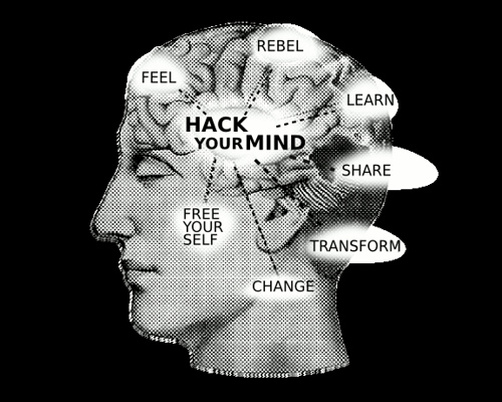 7 ways to Improve Your Brain Plasticity A Brain Fitness Plan 1. Exercise. Change can only occur when the brain is alert and engaged, so you need to be rested. A tired brain is not a highly functional brain. Stay in good shape, go outside, walk each day, eat good food, enjoy the sun. An active and healthy body means an active and healthy brain. 2. Be Positive because Being Positive Works Positive Change strengthens connections between neurons engaged at the same time towards a model of perfection. The brain wants to make connections that make your life and itself better, that improve its chance of survival. Knowing you can literally change the physical aspects of your brain means you can change. 3. Learn new things. Cross train, study things in groups. Neurons that fire together wire together. Studies show your brain lights up when learning something new, and once habit, your brain lights up and the beginning and the end. Challenge yourself, learn a new language, take up a martial art, start painting or write a book, start a business., (www.lifestylebusinessbookclub.com). Training needs to be taxing and systematically improving. 4. Initial changes are just temporary. Incremental engaged steps, bit by bit produce lasting knowledge. Study a little every time, I study in blocks of twenty minutes switching tasks or subjects, but you need to do a little bit every day, consistency matters. Then test yourself. Training should be incremental. 5. Brain plasticity can be positive or negative (bad habits) Habits can work either way, good or bad, so be conscious of what you do habitually. What you do daily, you become. Control your habits, know what causes you to do something, the cue to your habit, learn what the routine is, and then know the reward. What do you get out of the habit. Think about it. Then hack it. Tweak the cue. Find a better way to achieve the reward. Also, being part of a group helps reinforce the change. 6. Memory is crucial for learning and can be improved. Memory is a skill, not a born gift. It takes work and practice. A quote from Walking With Einstein: It was a technique he promised I could use to remember people’s names at parties and meetings. “The trick is actually deceptively simple,” he said. “It is always to associate the sound of a person’s name with something you can clearly imagine. It’s all about creating a vivid image in your mind that anchors your visual memory of the person’s face to a visual memory connected to the person’s name. When you need to reach back and remember the person’s name at some later date, the image you created will simply pop back into your mind ... So, hmm, you said your name was Josh Foer, eh?” He raised an eyebrow and gave his chin a melodramatic stroke. “Well, I’d imagine you joshing me where we first met, outside the competition hall, and I’d imagine myself breaking into four pieces in response. Four/Foer, get it? That little image is more entertaining—to me, at least—than your mere name, and should stick nicely in the mind.” More notes on walking With Einstein are here: http://www.darylburnett.com/1/post/2012/03/memory-tips-from-the-book-moonwalking-with-einstein.html 7. Motivation is key. Be Engaged. What you do needs to be interesting to motivate, if you want it, you will learn it, so much it interesting. Reward yourself when you progress. Have goal, a reason to improve.D D “Every man should be able to save his own life. He should be able to swim far enough, run fast and long enough to save his life in case of emergency and necessity. He also should be able to chin himself a reasonable number of times, as well as to dip a number of times, and he should be able to jump a reasonable height and distance.”
(Liederman, Endurance) Quotes from The Fighter's Mind by Sam Sheridan
"It was understood that there was a winner and a dead man. Which makes my approach to training totally different if I'm going to die. It's impossible for you to train the same way, I don't care how much you practice, I don't care how sharp your sword is or what famous smith made it. If you go into a sword fight for points, you'll never obtain what I'm obtaining with a dull sword against somebody that's going to die." - Virgil Hunter Life and death intensity matters and is valuable. Nothing can replace natural self- discipline, nothing can replace time in a gym. Fighters are born in the dedication to repetition. The research shows that repeated social defeats not only affect the hippocampus's ability to make new cells, it affects serotonin levels. - Sam Sheridan Extremism is showing what is possible - Dan Gable " He may be strong, but all I have to do during that nine minutes of wrestling is loosen one single wire in his brain, make him do something that isn't perfect, and he will fall apart. " - Dan Gable "Everyone is the same for the first two minutes, everyone has a chance to win, but after that you start to seperate physically and mentally." - Marcelo Garcia Jiu- jitsu is about dedication and knowledge. Haruki Murakami (What I Talk About When I Talk About Running "People sometimes sneer at those who run every day, claiming they'll go to any length to live longer. But don't think that's the reason most people run. Most runners run not because they want to live longer, but because they want to live life to the fullest. If you're going to while away the years, it's far better to live them with clear goals and fully alive then in a fog, and I believe running helps you to do that. Exerting yourself to the fullest within your individual limits: that's the essence of running, and a metaphor for life — and for me, for writing as whole. I believe many runners would agree" — Haruki Murakami (What I Talk About When I Talk About Running |
Click to set custom HTML
Categories
All
Disclosure of Material Connection:
Some of the links in the post above are “affiliate links.” This means if you click on the link and purchase the item, I will receive an affiliate commission. Regardless, I only recommend products or services I use personally and believe will add value to my readers. I am disclosing this in accordance with the Federal Trade Commission’s 16 CFR, Part 255: “Guides Concerning the Use of Endorsements and Testimonials in Advertising.” |
Photos from Wesley Oostvogels, Thomas Leuthard, swanksalot, Robert Scoble, Lord Jim, Pink Sherbet Photography, jonrawlinson, MonsterVinVin, M. Pratter, greybeard39, Stepan Mazurov, deanmeyersnet, Patrick Hoesly, Lord Jim, Dcysiv Moment, fdecomite, h.koppdelaney, Abode of Chaos, pasa47, gagilas, BAMCorp, cmjcool, Abode of Chaos, faith goble, nerdcoregirl, Adrian Fallace Design & Photography, jmussuto, Easternblot, Jeanne Menjoulet & Cie, aguscr, h.koppdelaney, Saad Faruque, ups2006, Unai_Guerra, erokism, MsSaraKelly, Jem Yoshioka, tony.cairns, david drexler, Reckless Dream Photography, Raffaele1950, kevin dooley, weegeebored, Cast a Line, Zach Dischner, Eddi van W., kmardahl, faungg's photo, Alan Light, acme, Evan Courtney, specialoperations, Mustafa Khayat, darkday., Orin Zebest, Robert S. Donovan, disparkys, kennethkonica, aubergene, Nina Matthews Photography, infomatique, Patrick Hoesly, j0sh (www.pixael.com), SmithGreg, brewbooks, tjsander, The photographer known as Obi, Simone Ramella, striatic, jmussuto, m.a.r.c., jfinnirwin, Nina J. G., pellesten, dreamsjung, misselejane, Design&Joy, eeskaatt, Bravo_Zulu_, No To the Bike Parking Tax, Kecko, quinn.anya, pedrosimoes7, tanakawho, visualpanic, Brooke Hoyer, Barnaby, Fountain_Head, tripandtravelblog, geishaboy500, gordontarpley, Rising Damp, Marc Aubin2009, belboo, torbakhopper, JarleR, aakanayev, santiago nicolau, Official U.S. Navy Imagery, chinnian, GS+, andreasivarsson, paulswansen, victoriapeckham, Thomas8047, timsamoff, ConvenienceStoreGourmet, Jrwooley6, DeeAshley, ethermoon, torbakhopper, Mark Ramsay, dustin larimer, shannonkringen, Stf.O, Todd Huffman, B Rosen, Lord Jim, Jolene4ever, Ben K Adams, Clearly Ambiguous, Daniele Zedda, Ryan Vaarsi, MsSaraKelly, icebrkr, jauhari, ajeofj3, jenny downing, Joi, GollyGforce, Andrew from Sydney, Lord Jim, 'Retard' (says University of Missouri), drukelly, Sullivan Ng, jdxyw, infomatique, AlicePopkorn, RAA408, Abode of Chaos, SaMaNTHa NiGhTsKy, as always..., D@LY3D, Angelo González, the sugary smell of springtime!, Marko Milošević, pedrosimoes7, MartialArtsNomad.com, 401(K) 2013, Sigfrid Lundberg, MoneyBlogNewz, NBphotostream, the stag and doe, Jemima G, bablu121, .reid., jared, EastsideRJ, Alex Alvisi, Marie A.-C., geishaboy500, modomatic, starsnostars., Hardleers, Sarah G..., donielle, Danny PiG, bigcityal, || UggBoy♥UggGirl || PHOTO || WORLD || TRAVEL ||, -KOOPS-, seafaringwoman, kingkongirl, Richard Masoner / Cyclelicious, Hans Gotun, gruntzooki, Duru..., Vectorportal, Peter Hellberg, Alexandre Hamada Possi, Santi Siri, Joshua Rappeneker, a little tune, Patricia Mangual, erokism, woodleywonderworks, Philippe Put, Purple Sherbet Photography, Abode of Chaos, greybeard39, swanksalot, greyloch, Omarukai, Marc_Smith, SLPTWRK, Peter Alfred Hess, illum, MarioMancuso, willc2, _titi, Lightsurgery, Rennett Stowe, feverblue, Esteman., Keith Allison, DCist, h.koppdelaney, Mike Deal aka ZoneDancer, Jos Dielis, The Wandering Angel, Nathaniel KS, MsSaraKelly, Frank Lindecke, Kara Allyson, JeremyGeorge, deoman56, gagilas, Xoan Baltar, Luke Lawreszuk, Eric-P, fdecomite, lorenkerns, masochismtango, Adrian Fallace Design & Photography, anarchosyn, -= Bruce Berrien =-, radiant guy, Free Grunge Textures - www.freestock.ca, El Bibliomata, antmoose, Pedro Belleza, Fitsum Belay/iLLIMETER, Nathan O'Nions, denise carbonell, swanksalot, ▓▒░ TORLEY ░▒▓, Marco Gomes, Justin Ornellas, jenni from the block, René Pütsch, eddieq, thombo2, Ben Mortimer Photography, :moolah, ideowl, joaquinuy, wiredforlego, Rafa G. _, derrickcollins, Fishyone1, ben pollard, Admiralspalast Berlin, Georgio, garybirnie.co.uk, fiskfisk, MoreFunkThanYou, xJason.Rogersx, kevin dooley, David Holmes2, Kris Krug, JD Hancock, Images_of_Money, andriux-uk events, Tyfferz, decafinata, jonrawlinson, isado, Lohan Gunaweera, Derek Mindler, Mike "Dakinewavamon" Kline, themostinept, kiwanja, erokism, dktrpepr, Keoni Cabral, denise carbonell, Neal., tonystl, ericmay, Ally Mauro, erokism, Georgie Pauwels, anitakhart, Ivan Zuber, r2hox, Aka Hige, badjonni, striatic, Arry_B, 401(K) 2012, pvera, Lord Jim, Dredrk aka Mr Sky, TerryJohnston, eschipul, wiredforlego, Yuliya Libkina, fabbio, Justin Ruckman, David Boyle, Matthew Oliphant, Keoni Cabral, Thaddeus Maximus, Abode of Chaos, matthias hämmerly, dospaz, LadyDragonflyCC - >;<, CassiusCassini2011, Abode of Chaos, Jorge Luis Perez, infomatique, Mark Gstohl, AliceNWondrlnd, ç嬥x, ssoosay, striatic, NASA Goddard Photo and Video, feverblue, MsSaraKelly, kohlmann.sascha, Vox Efx, country_boy_shane, paularps, Gage Skidmore, HawkinsSteven, Cam Switzer, Arenamontanus, anieto2k, Georgie Pauwels, my camera and me, Lord Jim, nolifebeforecoffee, Joris_Louwes, Kemm 2, VinothChandar, DeeAshley, brewbooks, craigemorsels, Boris Thaser, Poster Boy NYC, ssoosay, guzzphoto, sachac, chefranden, Wanja Photo, Samuel Petersson, onlyart, samsaundersleeds, Ghita Katz Olsen, mcveja, matthewwu88, Victor Bezrukov, JasonLangheine, erokism, vitroid, thethreesisters, charlywkarl, Sharon & Nikki McCutcheon, Ol.v!er [H2vPk], mikecogh, tec_estromberg, noii's, nicholaspaulsmith, Tucker Sherman, Phil Grondin, Cea., Randomthoughtstome, dcobbinau, rafeejewell, pedrosimoes7, lumaxart, marfis75, roland, RLHyde, David Boyle in DC, Sigfrid Lundberg, Thomas Geiregger, Uberto, bgottsab, Conor Lawless, phphoto2010, Steven | Alan, ckaroli, dweekly, AleBonvini, 드림포유, die.tine, MsSaraKelly, equinoxefr, Sarabbit, Abode of Chaos, Galantucci Alessandro, LadyDragonflyCC - >;< - Spring in Michigan!, Alan Gee, Johan Larsson, SoulRider.222, Robert S. Donovan, amslerPIX, cfaobam, Amy L. Riddle, Bladeflyer, Blomstrom, pumpkincat210, Lord Jim, Symic, kevin dooley, pixelthing, Nelson Minar, Fraser Mummery, The Booklight, edenpictures, everyone's idle, betsyweber, h.koppdelaney, ark, Ben Fredericson (xjrlokix), dphiffer, Jeff Kubina, istolethetv, dullhunk, Tambako the Jaguar, fdecomite, The Daily Ornellas, Badruddeen, kevindooley, mnem, Reyes, sadaton, Mary..K, akunamatata, Dennis Vu Photography for Unleashed Media, mitch98000, ganesha.isis, maria j. luque, doneastwest, w00tdew00t, kevindooley, NightFall404, Infrogmation, nandadevieast, darkpatator, Christos Tsoumplekas, sicamp, Hello Turkey Toe, cliff1066™, James Jordan, gailf548, andrew_byrne, infomatique, graphia, -= Bruce Berrien =-, aphrodite-in-nyc, jmussuto, eiko_eiko, Emily Jane Morgan, _Imaji_, kait jarbeau is in love with you, Leeks, h.koppdelaney, paul-simpson.org, Pinti 1, Namlhots, -KOOPS-

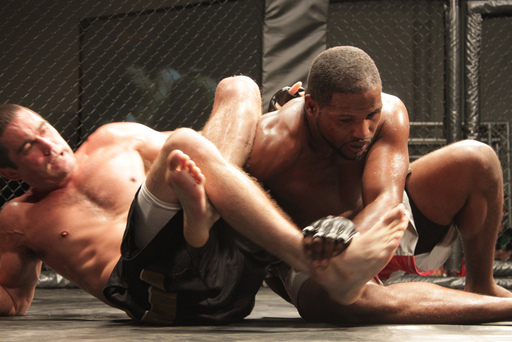
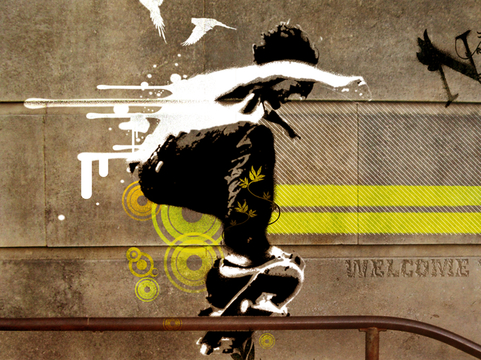


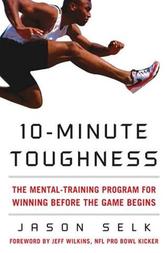

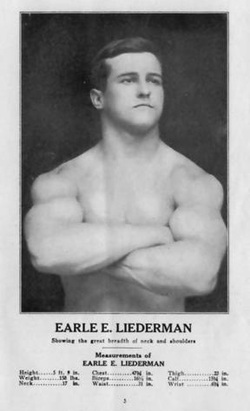



 RSS Feed
RSS Feed

